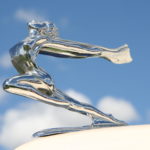Wine Labels 101
What’s in a label? All wine bottles have them. They come in all shapes, forms, sizes, and colors. Most are easy to read, provided you have a college degree in Decypherization and are fluent in at least 3 languages. Over the next few issues of this newsletter, in a 2 part series, we will take a look at their history, their meaning, their purpose, and the effect they may have on the purchase of your next bottle of wine.
First and foremost, the label that appears on every bottle of wine is in fact, a legal document. By law, certain information is required to be provided to the consumer. Strict standards exist for wines imported into the United States, yet these countries have had long existing quality and labeling policy in place mandating certain extensive information. Comprehending this data is still a mystery to the most avid eonophiles. I will open class next newsletter examining these foreign issues. But first, history and current trends.
In the mid 1800’s, the first glue was patented that successfully affixed a printed label to a wine bottle. The basic information on these documents listed the producer, its vintage date, alcohol level, and its country of origin. Today, a much broader amount of information is provided for the consumer. Appellation, regions, sub-regions, vineyard, importer, varietal, blend, quality levels, where the grapes were picked, when they were picked, the row they were picked from, and darn near who picked them. Are we getting more info then we actually need?
Research and development of labels has become quite an expense for today’s winemakers. It has become a science as well as an art form for graphic designers and marketing teams. The design of a label, not the information printed on them, can make or break a winery trying to bring their product to market. To fight for shelf space and catch the eye of the consumer, they must distinguish themselves from thousands of other more established wines available in today’s shops, stores, and restaurants.
Studies have found that women purchase 60% of the wine consumed worldwide. The old school way of thinking, that women buy wines only because of their label, not for the quality inside the bottle, which in fact may still occur, but is farther from the truth in the eyes of modern researchers. More educated and wine savvy, female choices are based more on knowledge, rather than random selection, than ever before.
Fueled by Generation X and younger consumers experiencing the joys of wine, the nectar of the Gods has now become our number one alcoholic beverage of choice. This trend may explain the craziness associated with the New World of wine marketing. It is just me, or do we all need a Degree in Zoology or a Masters in Fine Arts before we make our next wine purchase?
Labels today feature monkeys, penguins, giraffes, mice, moose, goats, cats, dogs, kangaroos, bears, frogs, fish, and birds to name but a few. I need look no further than my own wine shelves to know the full occupancy of Noah’s Ark. Add in the oddly suggestive titles Il Bastardo, Bouteille Call, Morningwood, Cleavage Creek, Screw Kappa Napa, Earth Zin and Fire, Cardinal Zin, and Fat Bastard, or the dead celebrities Elvis, Jerry Garcia, and Marilyn Monroe, plus the cutesy double takes Goats do Roam, Goat Roti, and Bored Doe. With the inclusion of art works, colorful collages, and whimsical characters, its almost like watching Saturday morning cartoons.
Is there a method to the madness? Indeed there is. Marketing suggests giving the new generation of wine drinkers their own identity. They would rather have them buy with their eyes rather than through basic education. They target women and younger clientele with glitz and glam, creating a feast for their senses, which in turn, plays to their purchasing psyche.
Many buyers do not want to be associated with “Old Man Wines”, one’s their fathers consumed for years. And who can blame them.
Traditional labels still feature a facade of a chateau or long established logo. Seems the only thing that changes on these labels from year to year is the vintage date. Without mention as to the grape inside, it makes me wonder why in Geography class when I was in school, they never taught me that Bordeaux meant Cabernet or Merlot, Burgundy stood for Chardonnay or Pinot Noir and the Rhone produced Syrah or Grenache. Without this extended knowledge, its no wonder these wines do not exist in the minds of the new class of wine consumers.
Fine wines and educated palates will always find one another. Packaging and price will continue to be the driver to where all other wine purchases are made. A cute label may influence an impulse buy, but if what’s inside is not to your satisfaction, you may not return for a second helping. Not to imply that any of the wines mentioned or implied herein are of undrinkable quality. Most are quite tasty and good values. Others could be considered questionable masquerades as to the plonk hidden inside. The most important factor to remember is this. Whether you buy with your eyes, your heart, your mind, by recommendation, or by the rating, is that you are thoroughly satisfied with the purchase you have made.



